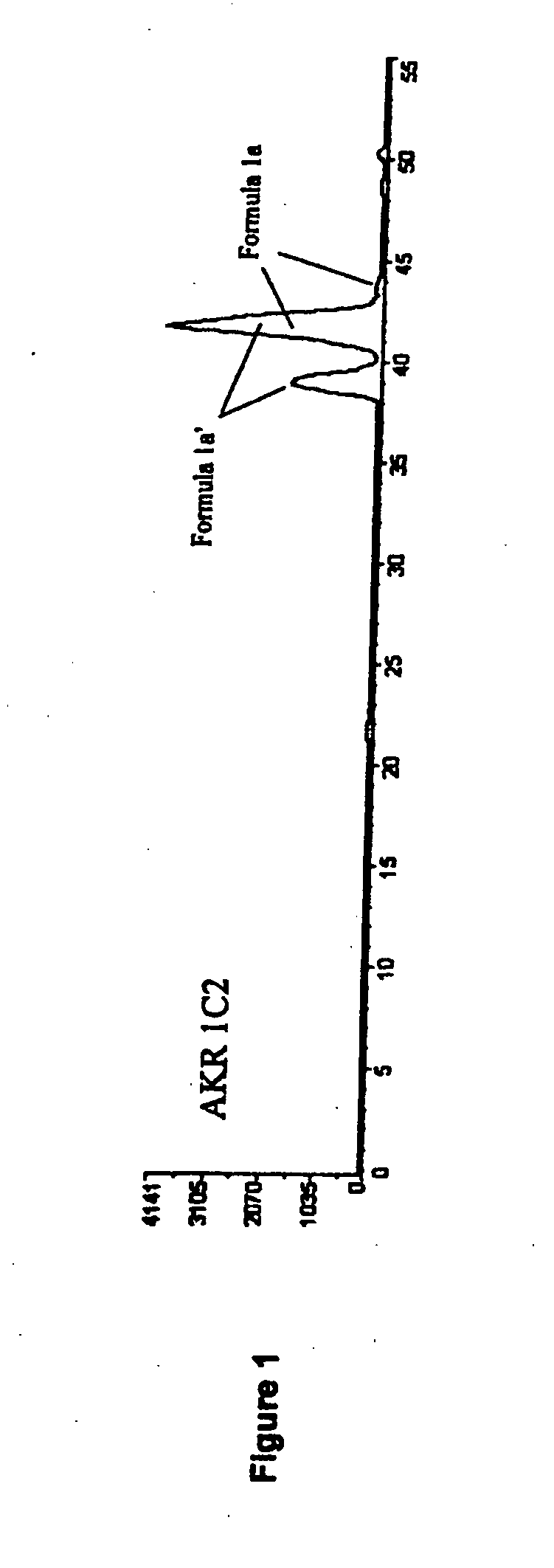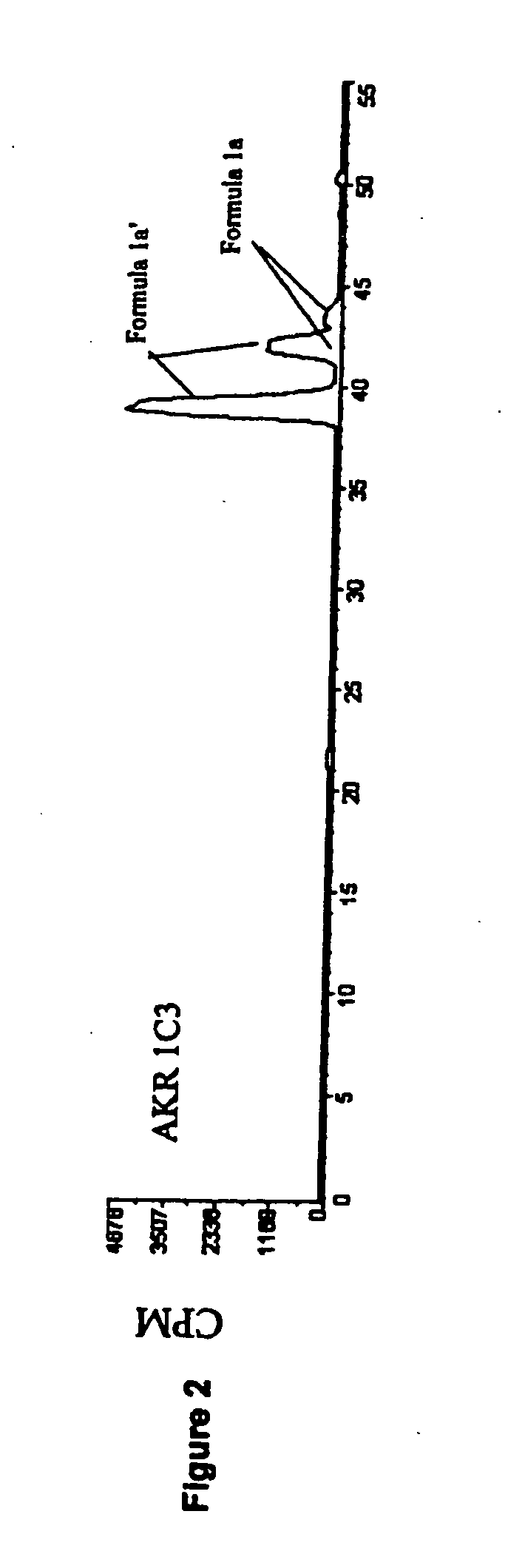Medicaments and methods combining a HCV protease inhibitor and an AKR competitor
a protease inhibitor and hcv technology, applied in the field of medicines and methods combining hcv protease inhibitors and akr competitors, can solve the problems of low sustained response rate of therapies, frequent side effects, poor treatment progress of patients with hcv infection, etc., to enhance the efficacy and duration of action, and modify the pharmacokinetic behavior
- Summary
- Abstract
- Description
- Claims
- Application Information
AI Technical Summary
Benefits of technology
Problems solved by technology
Method used
Image
Examples
example 1
PREPARATIVE EXAMPLE 1
[0793]
Step A
[0794] A solution of pyrazinecarboxylic acid 1a (3 g) in 150 mL of dry dichloromethane and 150 mL of dry DMF was stirred at 0° C. and treated with HATU (1.4 eq, 6.03 g). L-cyclohexylglycine hydrochloride 1b (1.2 eq, 6.03 g) was added in small portions. Then, N-methylmorpholine (4 eq, 10 mL, d 0.920) was added dropwise. The reaction mixture was gradually warmed to room temperature and stirred for 20 h. All the volatiles were removed under vacuum and the residue was dissolved in 500 mL of ethyl acetate. The organic layer was washed with water (100 mL), aqueous 1N HCl (100 mL), aqueous saturated sodium bicarbonate solution (100 mL), and brine (100 mL). The organic layer was dried over magnesium sulfate, filtered and concentrated under reduced pressure. The residue was chromatographed on silica gel (gradient: acetone / hexanes; 5:95 to 3:7) to afford the product 1c as a white solid.
Step B
[0795] A solution of methyl ester 1c (6.5 g) in 270 mL of a 1:...
example a
PREPARATIVE EXAMPLE A
[0810]
Step 1
[0811] A solution of acid 1 (255 mg) in 5 mL of dry dichloromethane and 5 mL of dry DMF was stirred at 0° C. and treated with HATU (368 mg). The amine hydrochloride 2 (201 mg) was added followed by addition of N-methylmorpholine (0.42 mL). The reaction mixture was gradually warmed to room temperature and stirred overnight. All the volatiles were removed under vacuum and the residue was taken into 100 mL of ethyl acetate. The organic layer was washed with aqueous 1N HCl (15 mL), aqueous saturated NaHCO3 (15 mL), water (15 mL), brine (15 mL), dried over MgSO4, filtered, and concentrated under reduced pressure to afford the desired product A1. No further purification was carried out for the product.
Step 2
[0812] A solution of A1 (360 mg) in 20 mL of a 1:1 mixture of toluene / DMSO was treated with EDCl (1.3 g) and dichloroacetic acid (0.42 mL, d 1.563). Reaction mixture was stirred at room temperature for about 3 h. The reaction mixture was diluted ...
example 101
SYNTHESIS OF EXAMPLE 101
[0864] Step 1
[0865] To a stirred solution of the proline derivative 1.01 (3.66 mmol, prepared as described above) in dichloromethane (20 mL) and DMF (15 mL) at 0° C. was added L-boc-tert-leucine (930 mg, 4.03 mmol), DIPEA (2.02 mL, 10.98 mmol) and HATU (1.8 g, 4.76 mmol). After 15 minutes at that temperature, the reaction flask was stored in the freezer (−20° C.), overnight (16 hr). The reaction mixture was diluted with dichloromethane (80 mL) and washed with saturated sodium bicarbonate solution (80 mL), 10% aq. citric acid solution (80 mL), brine (80 mL), dried (Na2SO4), filtered and concentrated. The crude material was purified by silica chromatography using 25 / 75 to 50 / 50 EtOAc / hexanes to provide 1.77 g of the required material, 101a. LC-MS: 518.1 (M+H)+.
Step 2
[0866] To a solution of the methyl ester 101a (1.21 g, 2.34 mmol) in THF (10 mL) and MeOH (5 mL) was added aq. 1M LiOH solution (5 mL). The reaction mixture was stirred at RT for 4 h. It was t...
PUM
| Property | Measurement | Unit |
|---|---|---|
| Molar density | aaaaa | aaaaa |
| Volume | aaaaa | aaaaa |
| Energy | aaaaa | aaaaa |
Abstract
Description
Claims
Application Information
 Login to View More
Login to View More - R&D
- Intellectual Property
- Life Sciences
- Materials
- Tech Scout
- Unparalleled Data Quality
- Higher Quality Content
- 60% Fewer Hallucinations
Browse by: Latest US Patents, China's latest patents, Technical Efficacy Thesaurus, Application Domain, Technology Topic, Popular Technical Reports.
© 2025 PatSnap. All rights reserved.Legal|Privacy policy|Modern Slavery Act Transparency Statement|Sitemap|About US| Contact US: help@patsnap.com



